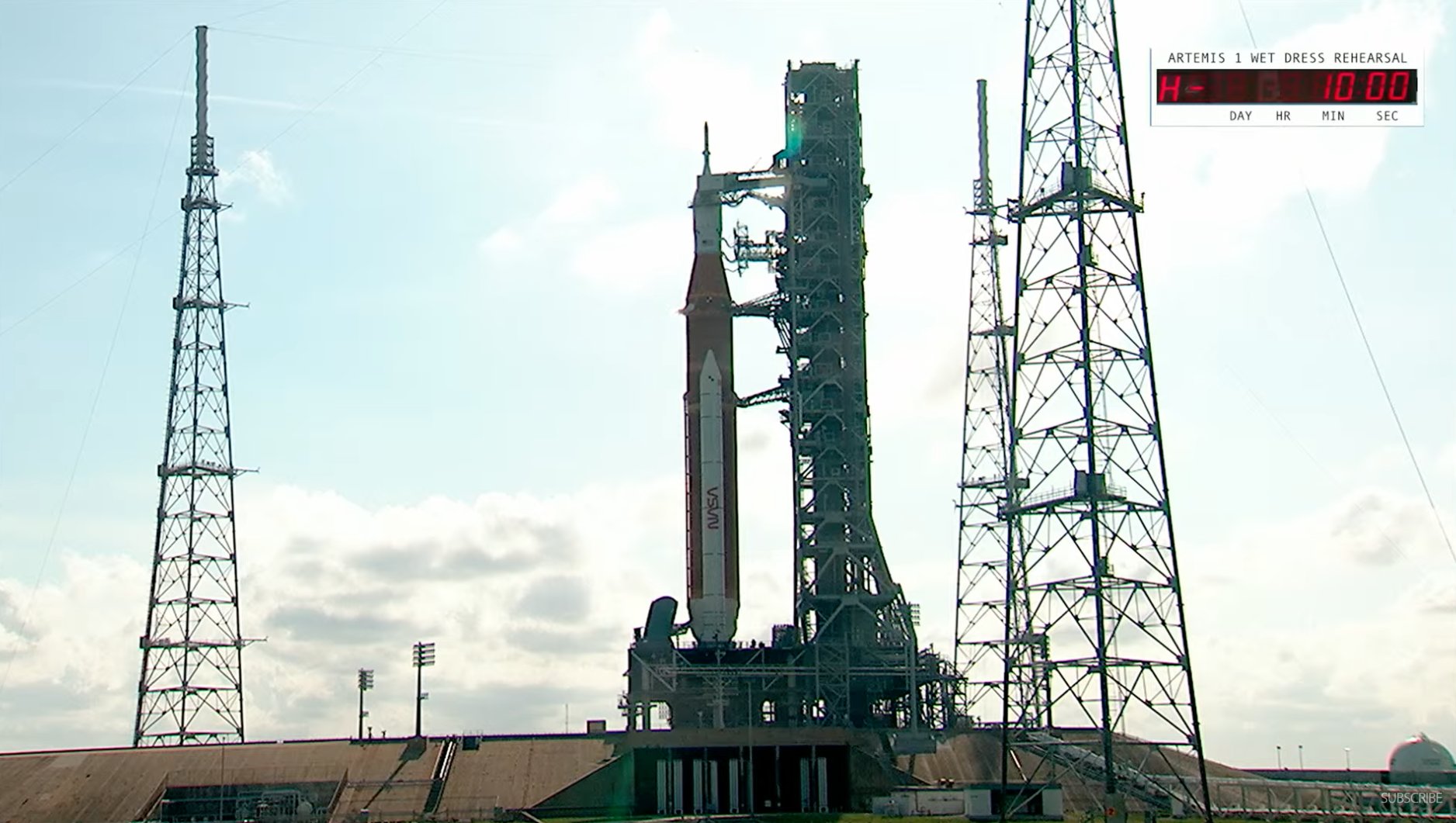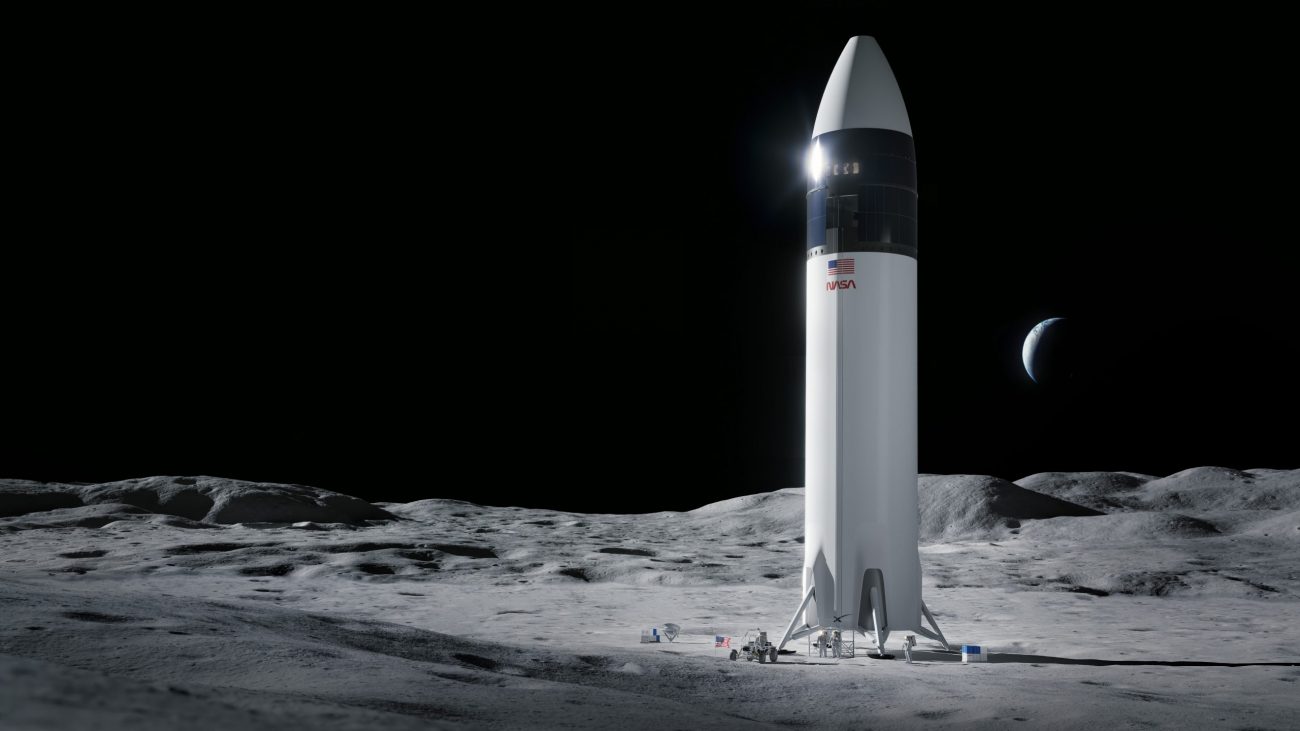NASA’s Artemis program aims to land humans on the moon by 2025; after more than 50 years since Apollo 17, the last manned journey to the lunar surface in 1972.
NASA conducted a live-streamed pre-launch test as the Artemis readies its final flight to the moon.
On the morning of June 20, the Artemis I rocket was fully fueled for the first time despite encountering some issues during the critical pre-launch test. However, the Artemis did not achieve the pre-launch test’s objective after the team discovered a hydrogen leak.
The pre-launch test is a critical step before giving clearance to the massive booster for its long-awaited first flight.
The crucial test, also known as the ‘wet dress rehearsal’ or dry run, simulates every launch stage at Kennedy Space Center in Florida without the rocket leaving the launch pad.
Today's #Artemis I wet dress rehearsal activities concluded after a modified countdown configuration and successfully adding propellant to the rocket. We will review the data and are meeting to discuss next steps. For updates: https://t.co/rZxnWJ0Kbi pic.twitter.com/dKtFZeVWDF
— NASA (@NASA) June 21, 2022
It involves loading super cold propellant, performing a full countdown simulation, resetting the countdown clock, and draining the rocket tanks.
NASA’s fourth attempt to conduct a rehearsal countdown and fueling test of its Space Launch System moon rocket began on June 18. The earlier three efforts during the wet dress rehearsal in April were unsuccessful. NASA claims that these issues have since been resolved, CNN reported.

Earlier, the NASA team had rolled the 322-foot-tall (98-meter-tall) Artemis I rocket stack back to the launch pad at Kennedy Space Center in Florida, including the Space Launch System and Orion spacecraft.
During a news conference last week, Charlie Blackwell-Thompson, Artemis launch director for NASA’s Exploration Ground Systems Program, said that the first few wet dress rehearsal attempts had already achieved many objectives in preparing the rocket for launch.
The mission team is considering the following dates for deploying Artemis I to the moon in late summer: August 23 to August 29, September 2 to September 6, and beyond. After its wet dress rehearsal, the Artemis rocket stack will return to the space center’s Vehicle Assembly Building, awaiting launch day.
All Eyes On Pre-Launch Test
On June 20, the launch day, NASA informed that it was holding off on the super cold propellant into the Space Launch System for a countdown test.

The Space Launch System’s core stage was filled with liquid oxygen in “slow fill” mode for the launch rehearsal. With this, it began pumping 755,000 gallons of super-cold propellants into the vehicle at the Kennedy Space Centre.
Subsequently, the liquid oxygen flow into the SLS core stage switched to “rapid fill” mode, allowing more oxidizers to enter the rocket faster.
After liquid oxygen, liquid hydrogen was pumped into the SLS core stage in “slow fill” mode. At 537,000 gallons, it was the largest propellant tank to be loaded into the Artemis 1 moon rocket at pad 39B. While loading, liquid hydrogen was chilled to minus 423 degrees Fahrenheit.
Liquid hydrogen is now pumping into the SLS core stage in “slow fill” mode. At 537,000 gallons, this is the largest propellant tank to be loaded into the Artemis 1 moon rocket at pad 39B.
Both propellants are now loading into the core stage.https://t.co/u7SXAXlcWn pic.twitter.com/NOnCoHnanZ
— Spaceflight Now (@SpaceflightNow) June 20, 2022
Shortly after liquid hydrogen started pumping, NASA confirmed that the liquid hydrogen load transitioned to “fast-fill” on the core stage of the SLS moon rocket. It moved the countdown rehearsal past the point where the launch team detected a hydrogen leak in April, leading to the derailment of the test.
“We’re feeling really good,” said Wes Mosedale, technical assistant to NASA’s Artemis 1 launch director, announcing that the liquid hydrogen tank was at 100% capacity on the SLS core stage. The liquid oxygen was 80% loaded onto the core stage.
After a coordinated and strenuous effort, both cryogenic tanks on the core stage of the Artemis 1 moon rocket were fully loaded and in “replenish” mode. About 733,000 gallons of liquid hydrogen and oxygen were pumped into the rocket during the core stage for the rehearsal countdown.
NASA says the Artemis launch team is evaluating a possible hydrogen leak associated with a quick disconnect fitting. https://t.co/u7SXAXlcWn
— Spaceflight Now (@SpaceflightNow) June 20, 2022
With the core stage fully loaded, NASA’s Artemis launch team started pumping liquid hydrogen into the Space Launch System’s upper stage with about 22,000 gallons of fuel. Shortly after this, the launch team encountered an issue.
The Hydrogen Leak
The crew identified a hydrogen leak at a quick disconnect line for the core stage. After the first attempt failed, the team looked into other ways to stop the leak.
A minor grass fire was started near a gravel road by something from the flare stack, which burns off extra liquid hydrogen from the rocket with propane flames. The squad kept an eye on the grass fire, expecting it to burn out once it reached the dirt road.
The test lasted longer than the planned 30-minute hold time while engineers struggled to find a solution to the hydrogen leak.
According to a tweet from NASA’s Exploration Ground Systems, the Artemis team decided to complete one countdown while hiding the hydrogen leak issue “to move farther into the testing for today’s wet dress rehearsal.”
At 7:28 pm ET, the 10-minute countdown began. The truncated countdown ended prematurely with 29 seconds remaining on the countdown clock. According to the CNN report, the shutdown was triggered by a flag from the SLS rocket’s computer, but the specific flag has not been revealed.
NASA says critical safing of the Space Launch System moon rocket is complete. Propellants will be drained tonight.
In summary, SLS was fully fueled today for the first time, but NASA found a new hydrogen leak and the countdown ended earlier than planned.https://t.co/u7SXAXlcWn pic.twitter.com/vQgKHRJdAM
— Spaceflight Now (@SpaceflightNow) June 20, 2022
Before the countdown, the team speculated that if the computers detected the hydrogen leak, it could act as a check engine light, forcing the countdown to come to a premature halt. The Artemis team ensured that the vehicle was safe when the countdown ended.
After completing many milestones listed in the wet dress objectives, including fully tanking the rocket and getting through a countdown, Charlie Blackwell-Thompson, Artemis launch director for NASA’s Exploration Ground Systems Program, said it was “definitely a good day for us.”
The next stage, she said, will be to evaluate all of the data collected from the test, including the difficulties, and devise a strategy for moving forward.
- Contact the author at sakshi.tiwari9555@gmail.com
- Follow EurAsian Times on Google News




